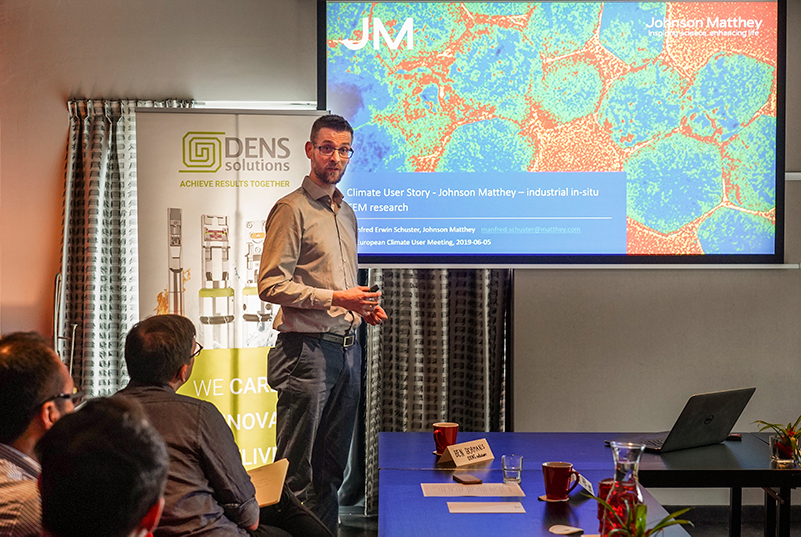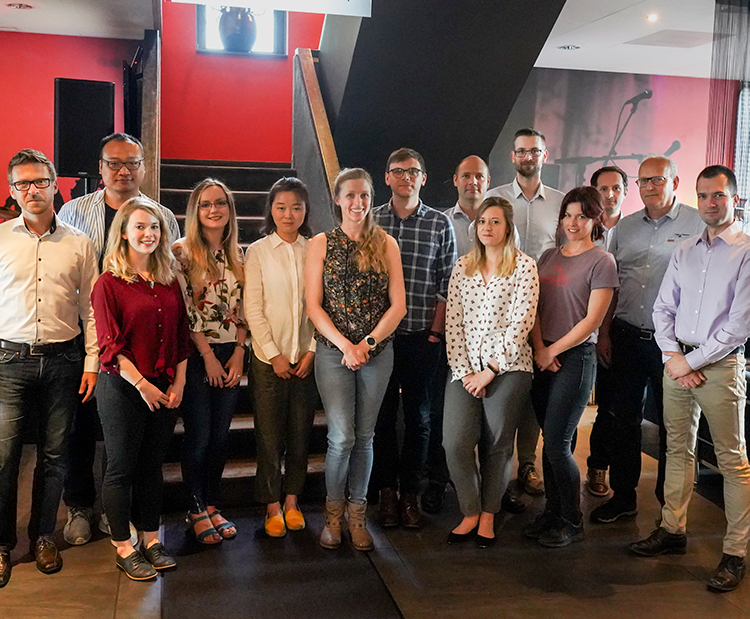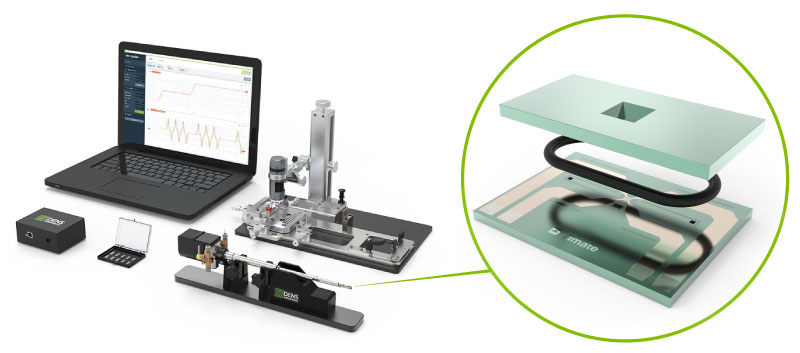
Visualizing the dynamic behaviours during carbon nanotube growth in extensive detail
In situ TEM allows for the direct observation of catalytic processes at relevant pressure and temperature conditions

Artist impression showing growth of carbon nanotubes via an iron-catalyzed process. © 2019 DENSsolutions All Rights Reserved
Carbon nanotubes (CNTs) hold many promises, for example in energy storage, high-performance catalysis, photovoltaics, and biomedical devices. Although industrial-scale production of CNTs has been realised, the controllability over the diameter, length, and chirality of CNTs is still unsatisfactory. This is largely due to the lack of atomic information on growth dynamics of CNTs and molecular-level understanding of growth mechanisms. Recently, Huang et al. from FHI Berlin and ETH Zürich have performed an In Situ TEM study on CNT growth and disclosed the growth and termination dynamics of CNTs in atomic detail under relevant conditions.
The stability of the DENSsolutions Nano-Reactor and the possibility to introduce stimuli, like gas and heating, allowed for the live observation at the atomic-scale:
Using In Situ TEM gas and heating, the researchers were able to reveal the influence of pressure and temperature on the growth of CNTs. Previous studies were contradictory about the active state of the catalyst. Now with real-time observations of CNT growth at relevant conditions, researchers were able to reveal not only the active phase of the catalyst but also the rich structural dynamics of the catalyst during the course of CNT growth.
In this study, the Nano-Reactor, the core of the DENSsolutions Climate In Situ TEM system, was used as a carrier for the Fe2O3 sample (precursor material for CNT growth), which was then heated in a diluted hydrogen gas flow as a pre-treatment. The In Situ experiment was started at 150 °C and was followed by a step wise increase up to 800 °C in a gas mixture of H2, C2H4 and He.
To accelerate catalyst research, the DENSsolutions Climate system can be delivered with a dedicated Gas Supply system that enables instant switching between gases and precise control over the gas mixture ratio.




Between 450 °C and 650 °C, the reduction of Fe2O3 to Fe3O4 was accompanied by a collapse of larger particles into smaller ones.
Did you know?
Our Impulse control software comes with a drag & drop profile builder that allows you to design & automate your experiment. It features a wide choice of parameters which enable you to create profiles that suit any sample and application.


“Thanks to the development of the MEMS-based gas flow Nano-Reactor, we are allowed to perform In Situ experiments inside the chamber of the TEM at relevant conditions. Using the Climate system from DENSsolutions, we have recently carried out a detailed In Situ study on the growth behaviors of CNTs at realistic conditions. On the basis of the real-time observations, we are able to reveal the active structure of the working catalyst and its dynamic re-shaping during the course of CNT growth. Extended observations further reveal three different scenarios for the growth termination of CNTs at the atomic-scale. The presented work provides important insights into understanding the growth and termination mechanisms of CNTs and may serve as an experimental basis for rational design and controlled synthesis of CNTs.”
First and corresponding author – Dr. Xing Huang, ETH Zürich
Learn more about our Climate system and Nano-Reactor:
Discover more publications made possible by our Climate system:
Read the original article:
































